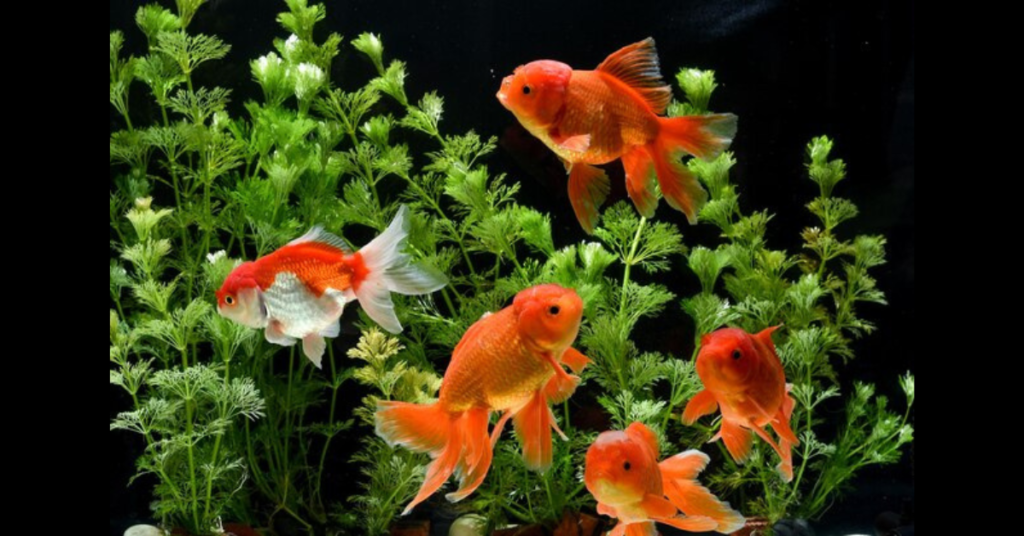The Goldfish Plant (Nematanthus gregarius), with its unique fish-shaped blooms, is a captivating choice for indoor gardeners. Renowned for its vibrant, cascading flowers and lush foliage, this tropical plant brings a touch of exotic charm to any space. Originating from the rainforests of Central and South America, the Goldfish Plant has become a favorite among plant enthusiasts for its aesthetic appeal and relatively straightforward care requirements. This comprehensive guide delves into the Goldfish Plant’s origins, physical characteristics, care and cultivation, propagation, common problems, and the benefits of including this plant in your home.
1. Origins and Natural Habitat
1.1 Historical Background
The Goldfish Plant, scientifically known as Nematanthus gregarius, belongs to the Gesneriaceae family, which includes other popular houseplants like African violets and gloxinia. Native to the tropical rainforests of Central and South America, particularly Brazil, this plant thrives in the humid, shaded understory of its natural habitat. Its adaptation to these conditions influences the care it requires when grown indoors.
1.2 Natural Habitat
In the wild, the Goldfish Plant grows as an epiphyte, meaning it relies on other plants for physical support while drawing nutrients and moisture from the air and surrounding environment. This adaptation allows it to survive in the low-light conditions of the rainforest floor. The high humidity, stable temperatures, and filtered light of this environment are crucial for its growth and flowering.
2. Physical Characteristics
2.1 Foliage
The Goldfish Plant features small, glossy, dark green leaves that are often slightly waxy. The foliage is arranged in a dense, cascading pattern, giving the plant a lush, full appearance. The leaves are oval to lance-shaped, with a smooth texture and pronounced veins.
2.2 Flowers
The most distinctive feature of the Goldfish Plant is its bright, tubular flowers that resemble small goldfish. These flowers are typically orange or red, with a unique shape that adds a playful element to the plant. The blooms appear in clusters and can last several weeks, adding vibrant color to any indoor space.
2.3 Growth Habit
The Goldfish Plant has a trailing or cascading growth habit, making it ideal for hanging baskets or high shelves where its foliage can spill over. It can also be grown in pots where its trailing stems can be encouraged to drape elegantly.
3. Growing and Caring for the Goldfish Plant
3.1 Light Requirements
The Goldfish Plant thrives in bright, indirect light. It requires a good amount of light to encourage blooming but can suffer from too much direct sunlight, which can scorch its leaves.
- Optimal Light: Place the plant near an east or west-facing window where it can receive several hours of bright, filtered light. If natural light is insufficient, consider using a grow light to provide additional illumination.
- Avoiding Direct Sunlight: Direct sunlight can cause leaf burn and hinder the plant’s growth. It’s best to protect the Goldfish Plant from the harsh midday sun and provide it with indirect or filtered light.
3.2 Watering
Watering is a crucial aspect of Goldfish Plant care. Overwatering can lead to root rot, while underwatering can cause the plant to wilt and drop leaves.
- Watering Schedule: Water the plant when the top inch of soil feels dry to the touch. During the growing season (spring and summer), the plant may need more frequent watering. In the winter, reduce the watering frequency as the plant’s growth slows down.
- Water Quality: Use room-temperature water to avoid shocking the plant. Tap water is generally acceptable, but if it’s heavily chlorinated, consider using distilled or rainwater.
3.3 Soil and Potting
Choosing the right soil and potting technique is essential for the Goldfish Plant’s health and growth.
- Soil Type: A well-draining potting mix is crucial for the Goldfish Plant. A mixture of peat moss, perlite, and orchid bark provides the right balance of moisture retention and drainage. This helps prevent waterlogging and root rot.
- Repotting: Repotting is necessary every 2-3 years or when the plant outgrows its container. Spring is the best time to repot, allowing the plant to establish itself during the growing season. Choose a pot that is slightly larger than the current one to accommodate new growth.
3.4 Temperature and Humidity
The Goldfish Plant prefers a stable temperature range and high humidity to thrive.
- Temperature: Maintain temperatures between 65-75°F (18-24°C) for optimal growth. The plant is sensitive to cold drafts and temperatures below 55°F (13°C), which can cause stress and hinder its development.
- Humidity: As a tropical plant, the Goldfish Plant enjoys high humidity. Aim for humidity levels around 50-60%. Regular misting, using a humidity tray, or placing the plant in a naturally humid area like a bathroom can help maintain the ideal humidity.
3.5 Fertilization
Regular fertilization supports healthy growth and flowering of the Goldfish Plant.
- Fertilizer Type: Use a balanced, water-soluble fertilizer with an NPK ratio of 10-10-10. This ensures the plant receives an equal amount of essential nutrients.
- Fertilizing Schedule: Fertilize the Goldfish Plant every 2-4 weeks during the growing season (spring and summer). Reduce fertilization in the fall and winter when the plant’s growth slows down.
4. Propagating the Goldfish Plant
Propagation allows you to grow new plants from an existing Goldfish Plant, expanding your indoor garden or sharing with friends.
4.1 Stem Cuttings
Stem cuttings are a popular method for propagating the Goldfish Plant.
- Selecting Cuttings: Choose healthy, non-flowering stems with at least 2-3 sets of leaves. Cut a 4-6 inch section just below a leaf node.
- Preparing Cuttings: Remove the lower leaves, leaving only the top 1-2 leaves. Allow the cut end to dry for a few hours to reduce the risk of rot.
- Rooting Process: Place the cutting in a container of water or directly in a pot filled with a moist, well-draining potting mix. If rooting in water, change the water regularly until roots develop. If using soil, cover the pot with a plastic bag or dome to maintain humidity.
- Transplanting: Once the cutting has developed a robust root system, transplant it into its own pot. Continue to provide high humidity and indirect light until the new plant is established.
4.2 Layering
Layering is another effective propagation method for the Goldfish Plant.
- Choosing a Stem: Select a healthy, flexible stem and gently bend it to touch the soil of another pot.
- Securing the Stem: Pin the bent stem to the soil using a hairpin or small stake. Ensure that the stem remains in contact with the soil.
- Root Development: Maintain high humidity around the layered stem. Once roots develop and the new plant starts to grow, separate it from the parent plant and pot it into its own container.
5. Common Problems and Solutions
Despite its relatively easy care requirements, the Goldfish Plant can encounter various issues. Identifying and addressing these problems promptly can ensure the plant’s continued health and vitality.
5.1 Pests
Pests such as aphids, mealybugs, and spider mites can affect the Goldfish Plant.
- Aphids: Small, green insects that feed on plant sap, causing distorted growth. Treat with insecticidal soap or neem oil.
- Mealybugs: White, cotton-like masses on stems and leaves. Remove mealybugs with a cotton swab dipped in alcohol or use insecticidal soap.
- Spider Mites: Tiny pests that create fine webbing on leaves. Increase humidity and use miticide or insecticidal soap to control outbreaks.
5.2 Diseases
The Goldfish Plant is susceptible to several fungal diseases, particularly in conditions of poor air circulation or overwatering.
- Root Rot: Caused by overwatering and poor drainage, leading to wilting, yellowing leaves, and a foul smell from the soil. To treat, remove the plant from its pot, cut away affected roots, and repot in fresh, well-draining soil.
- Leaf Spot: Characterized by brown or black spots on leaves. Improve air circulation and avoid overhead watering. Remove affected leaves and treat with a fungicide if necessary.
5.3 Environmental Stress
Environmental factors such as temperature fluctuations, improper lighting, and inconsistent watering can stress the Goldfish Plant.
- Leaf Drop: Sudden leaf drop may indicate a change in light, temperature, or watering routine. Gradually acclimate the plant to new conditions and maintain consistent care practices.
- Poor Blooming: Lack of flowers can result from insufficient light, improper watering, or nutrient imbalances. Adjust lighting conditions, ensure proper watering, and provide regular fertilization.
6. Benefits of the Goldfish Plant
The Goldfish Plant offers several benefits beyond its aesthetic appeal, making it a valuable addition to indoor spaces.
6.1 Air Purification
Like many houseplants, the Goldfish Plant contributes to air purification by removing toxins and releasing oxygen. It helps improve indoor air quality, creating a healthier living environment.
6.2 Aesthetic Appeal
The Goldfish Plant’s vibrant flowers and lush foliage add beauty and interest to any indoor space. Its trailing growth habit makes it an excellent choice for hanging baskets or high shelves, where it can showcase its cascading stems and colorful blooms.
6.3 Stress Relief
Caring for houseplants, including the Goldfish Plant, has been shown to reduce stress and promote mental well-being. The act of nurturing a plant, along with the visual enjoyment of its growth and blooms, provides a calming and therapeutic effect.
6.4 Educational Value
The Goldfish Plant offers an opportunity to learn about tropical plants and epiphytes. Its unique growth habits and care requirements provide insights into plant biology and horticulture.
7. Designing with the Goldfish Plant
Incorporating the Goldfish Plant into your home’s design can enhance both its visual appeal and overall ambiance.
7.1 Container Choices
Selecting the right container is crucial for showcasing the Goldfish Plant’s beauty. Consider decorative hanging baskets, wall-mounted planters, or stylish pots that complement your interior decor.
7.2 Plant Pairings
The Goldfish Plant pairs well with other houseplants, such as ferns, philodendrons, and ivy. Grouping plants with similar care requirements creates a lush, cohesive indoor garden.
7.3 Seasonal Decoration
Incorporate the Goldfish Plant into seasonal decorations by using festive pots or arranging it with other seasonal plants. Its vibrant flowers add a cheerful touch to holiday decor or seasonal displays.
Conclusion
The Goldfish Plant (Nematanthus gregarius) is a striking and versatile addition to any indoor garden. With its unique fish-shaped blooms, lush foliage, and relatively easy care requirements, it offers both aesthetic and practical benefits. By understanding its origins, physical characteristics, care needs, and propagation methods, you can ensure that your Goldfish Plant thrives and adds vibrant color and charm to your home. Whether you are a seasoned plant enthusiast or new to indoor gardening, the Goldfish Plant is a captivating choice that enhances any space with its exotic beauty and delightful blooms.







